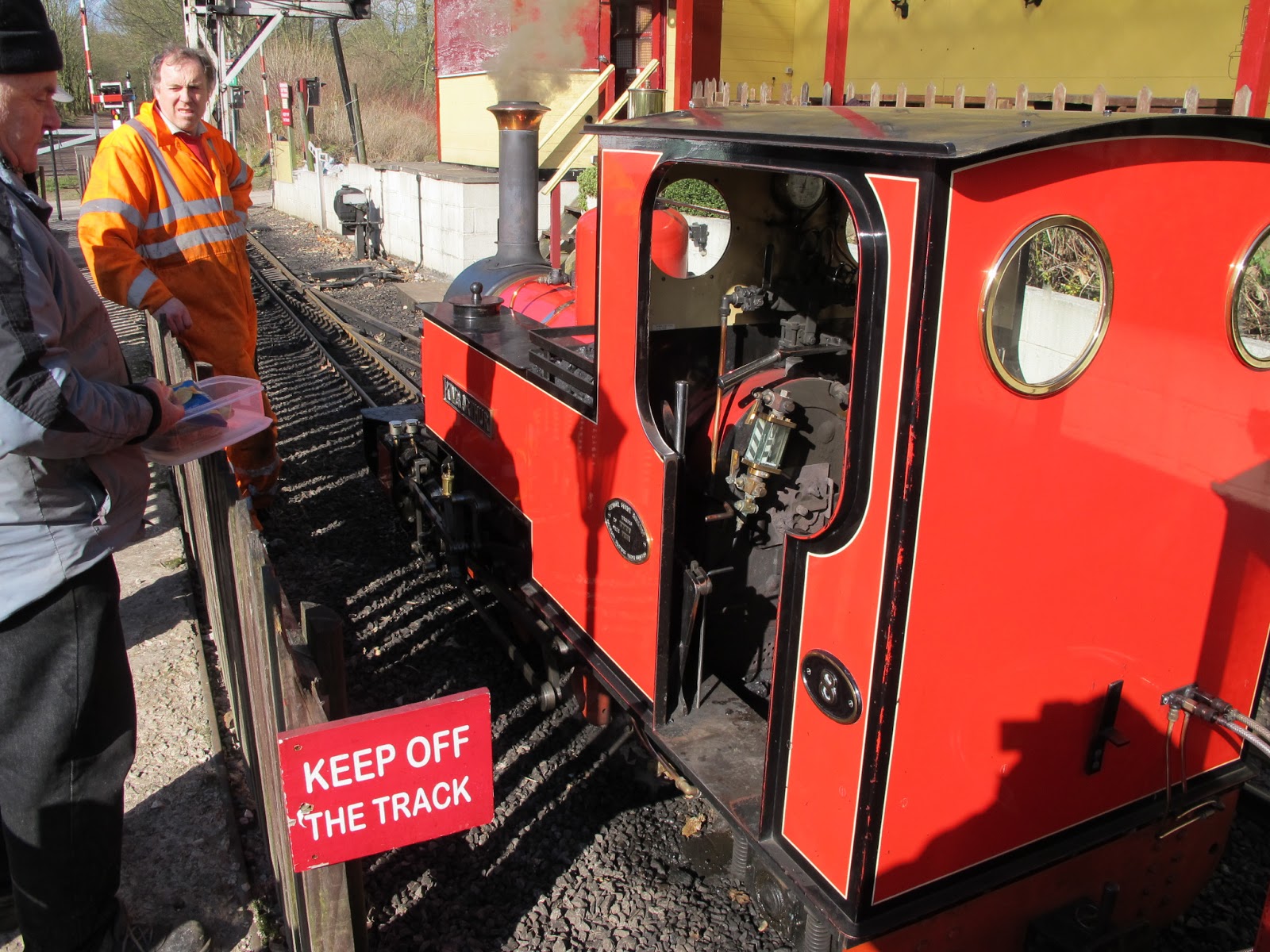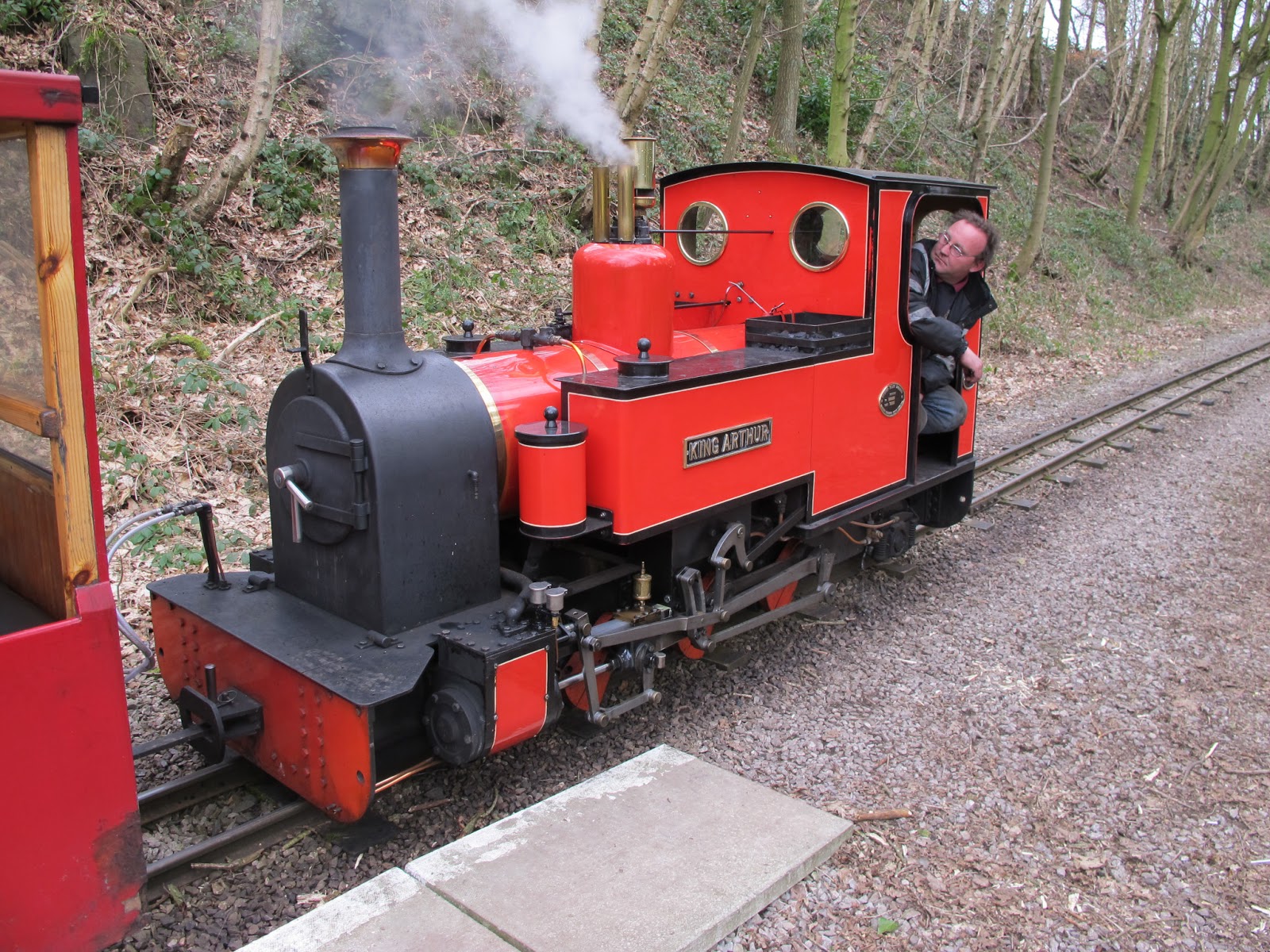Time for another steam fix! Five of us (Malc, Ivan, John, Peter, and me) sampled the local bus, the Manchester Metrolink Tram, and the East Lancashire Railway today.
Please click on any picture to see a larger image.
Peter, Malc and myself caught the 88 bus to Altrincham at Davenport Green at 08:35 this morning. Here, John and Ivan join the bus a few minutes later at the Rifleman's, Moor Lane.
At Altrincham we took the Metrolink tram to Bury, via central Manchester. We sat at the front giving a 'driver's eye' view of the track ahead, intially over the old MSJ&A (Manchester, South Junction, and Altrincham) railway I used to travel on regularly to school (from Brooklands to Altrincham) on the 1500Vdc electric trains when it was 'heavy rail'. The line was later re-electrified at the standard 25KVac, until becoming a Metro line in the mid 1990s, re-electrified again at 750Vdc.

On arrival at Bury, we headed to the market (Malc, Ivan, Peter, and John, above). The initial impression of this town is how, in complete contrast to Altrincham with its sense of failure and many boarded up shops (I remember Altrincham from my school days as a thriving market town) Bury is vibrant and alive. The market alone is on a par with those one sees in mainland Europe, with food halls and much high quality produce and products. It has an under cover and open market, and in the town itself the shops are doing good business with no sign of boarded-up decline. I wonder what their secret is? No nearby out-of-town shopping centres, perhaps?

This purveyor of fine meats gave Ivan and me a sample of his excellent pork pie. It was so good we had to summon the other three, and purchased a couple of meat and potato pies for lunch. Note how Malc always comes fully prepared when on manoeuvres; his backpack contains a flask of coffee and some sandwiches, and even has a portable folding seat on it.
.....Which we took with us to the excellent bar and cafe on platform 1 of Bury Bolton Street station, the original terminus of the East Lancashire Railway
Here we discovered the excellent 'house beer' of the Railway, 'Piston Broke'. A superb hoppy ale in prime condition, and only £2.30 a pint! We ate our pies here, and Peter and Ivan ordered soup as well (not up to the standard of the beer, they told us). The location, and the 'Piston Broke', are so good one is tempted to spend a day in Bury getting pied-up at the market and sitting here drinking the ale and watching the trains go by!
One such train was this Brush Type 4 (later classified by BR as the Class 47) diesel locomotive hauling one of the two trains running today. But we were waiting for the other - the steam hauled train!
....Hauled by this, 'The Great Marquess', a Gresley-designed K4 class 2-6-0 steam locomotive built in 1937 by the North British Railway for the steep grades and sharp curves of the West Highland Line. All six of the class were named after Highland Chieftains or Grandees. 'The Great Marquess' is the only surviving member of the class, and is main-line certified so it can operate trains on the national network.
John does his 'road drilling' impression, while Malc looks on
Peter and Ivan relax in the comfortable ex-BR Mk1 open coach
The K4 is a three cylinder locomotive. Here is the big end of the middle cylinder connecting rod, on the centre axle. The other two cylinders are external to the frames.
At the northern end of the line, Rawtenstall, our loco uncoupled and ran-around the train ready to commence the journey back down the Irwell Valley to Bury and on to Heywood.
'The Great Marquess' running tender-first past her train at Rawtenstall
We travelled to Heywood, the other end of the line, and back to our starting point at Bury Bolton Street where there is a transport museum. Here is a Manchester horse-drawn tramcar nicely preserved in the museum.
My father had one of these in the 1950s, a Ford Model 'Y', which I well remember (though our's wasn't as pristine as this example). The family name for the car was 'Agatha'; I've no idea why!
Ivan and John check out a traction engine in the museum while Peter's attention is taken by a rather nice Field Marshall tractor just out of shot to the right
After an indifferent pint in a pub near the railway, we went for the tram back to Altrincham. Malc, Peter, Ivan and John are wondering what these strange structures on the tram station platform are for; to high for seats, too low to lean on..... what on earth are they?
We arrived back in Altrincham with about 45 minutes before the next and final number 88 bus back to Wilmslow was due to depart, so went to the Bricklayers Arms for a pint! The 88 left on time and with few passenger at that time of day made good progress to Wilmslow. In fact, when I got off at my local stop the bus continued on its way to Knutsford with only the driver on board!
So ended another interesting and enjoyable old gits' outing. Good beer, good company, trams, vintage steam, and Bury Market pies..... Brilliant!
.














































